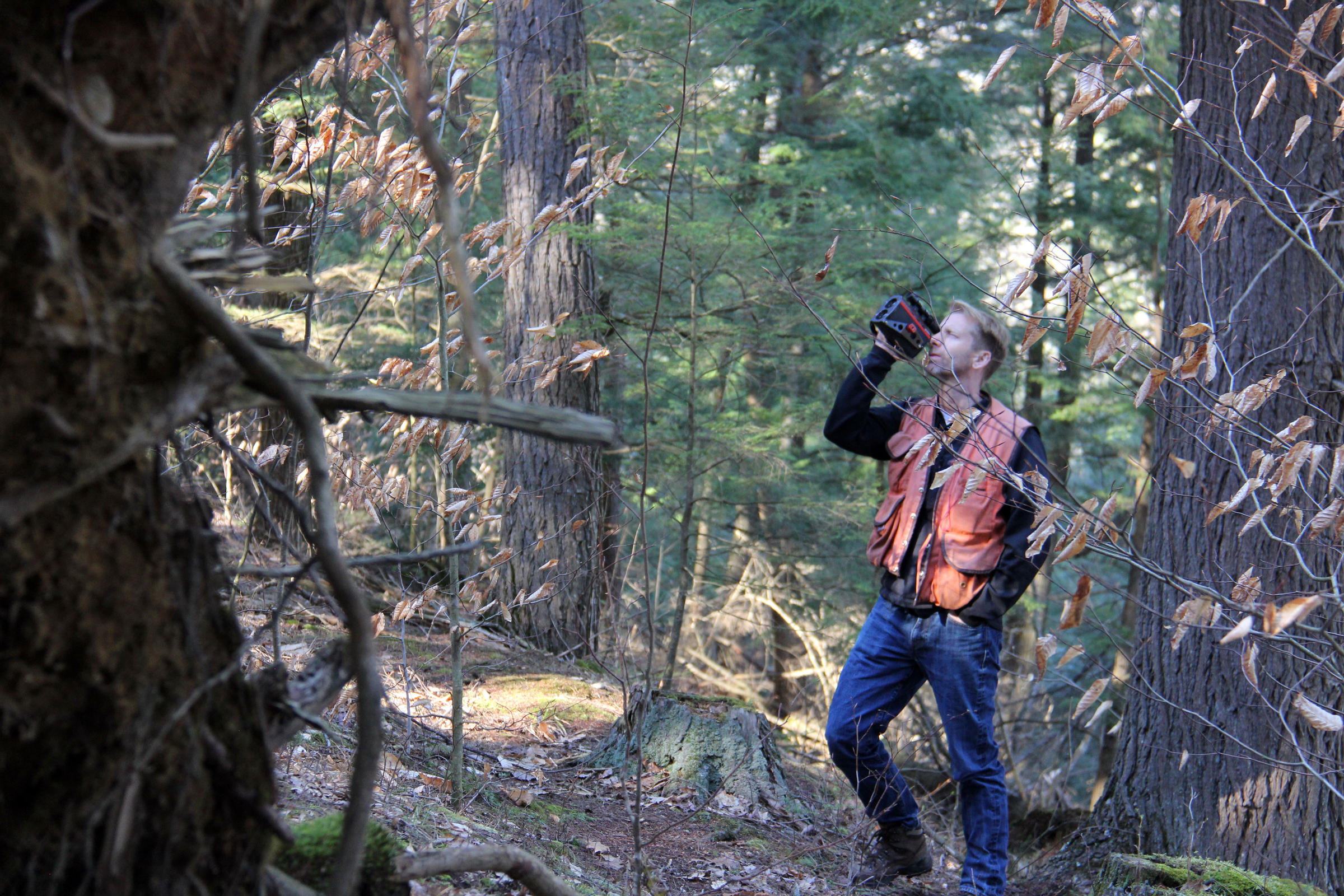Mimicking Mother Nature, UVM Scientists ‘Nudge’ Forests Toward Old Growth Conditions

UVM forest ecologist Bill Keeton uses a laser rangefinder to measure the height of a tree in UVM’s Jericho Research Forest.
In the northeast U.S., there is less than 1 percent of old growth forest left. A new University of Vermont study finds that harvesting trees in a way that mimics old growth forests not only restores critical habitat, but also stores a surprising amount of carbon.
For a forest to be considered “old growth,” it must grow largely undisturbed, usually for several centuries. These ancient forests help foster biodiversity of plants, animal and even fungi — and can help mitigate flooding.
But UVM forest ecologist Bill Keeton wanted to see if he could take a “middle-aged” New England forest and “nudge” the forest ecosystem into old growth conditions.
